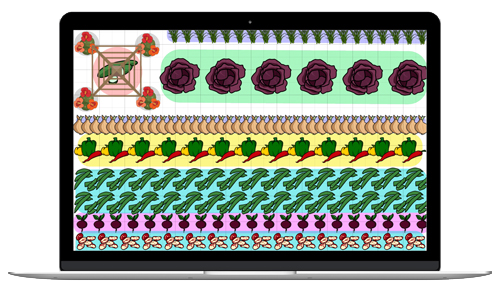
Planting, Growing, and Harvesting Rhubarb
The Almanac Garden Planner - Use It Free for 7 Days!
Plan your 2025 garden with our award-winning Garden Planner.
These common varieties have attractive red stalks and excellent growers:
- ‘Canada Red’
- ‘Crimson Red’
- ‘MacDonald’
- ‘Valentine’
In addition to the previous four, there is a reliable, green-stalked cultivar named:
- ‘Victoria’
Cooking Notes
Check out our list of best rhubarb recipes to put your fresh rhubarb to good use! Plus, learn how to make a rhubarb tonic.
ADVERTISEMENT
It’s natural for rhubarb to flower and go to seed. However, you can delay that stage a few ways: Grow Canada Red or Valentine varieties; they are less likely to bolt that “old-fashioned” varieties such as Victoria and MacDonald (these are heavy stalk producers). Older/more mature plants are more likely to bolt than younger ones, although dividing every 4 to 5 years, as it sounds like you did, can essentially rejuvenate mature plants. Applying fertilizer (a balanced type, e.g. 12-12-12) or well composted manure in spring can also delay/discourage bolting. If your plant volts/produces flowers, it is recommended that you remove them, so it will focus its energy on producing leaves.
We are not familiar with rhubarb compared with corn, but the stem and leaf tissue of rhubarb can be damaged by the European corn borer larvae, which as the name indicates is a pest of corn, both sweet and grain.
My rhubarb doesn’t get big enough to eat. The leaves are getting holes I assume from a bug of some type. People talk about flowers as part of the rhubarb but i’ve never had any flowers. HELP!!
Hi, Candy. Some varieties of rhubarb are more prone to producing flowers than others. Do not worry about that. The holes, those you should worry about. If the holes are ragged and fairly big, check for a trail of slime–as slugs sometimes like to eat rhubarb leaves. Tiny to moderate holes in the leaves could be beetles, such as the Japanese beetle. Caterpillars, such as the European corn borer and imported cabbageworm, may sometimes attack leaves or stalks. Other pests, such as aphids or rhubarb curculio, make punctures rather than chewing holes. Look underneath the leaves, and at the base of plants in the soil, for any lurking pest. To learn about garden pests and diseases, check out this page.
We have moved into a home with an amazing rhubarb patch growing beside one garden shed. Within the next couple of weeks we will be building a second shed beside it, which will cast the rhubarb patch into almost all shade. My plan is to divide and transplant the patch, based on your advice waiting until the fall dormant period. What is the risk to the plants this summer if they are heavily in shade probably from June onward? I realize that any further harvest may be compromised but will the plants actually die from lack of sunlight, or just not grow much larger this year and be ok to transplant in the fall. There were a lot of flower stalks starting, which I cut off, but I"m gathering this is an old growth patch and would need to be divided nevertheless. Also in Ontario, how much shade can they tolerate, I have spots that will either get full morning or afternoon sun but unlikely to have full sun all day.
You can definitely move the plants for a harvest next year, but rhubarb doesn’t grow well in the shade so you will not likely have a good crop this year.
We planted a rhubarb plant last year and it looked like it was dying so we moved it. It took off. Did not harvest last year. This year after feet of snow it's out of control. It's a monster. I've never owned one before. I don't remember the variety, green or red but it's red at the bottom and green about midway up the stalk is green. How do you know when ready? It continues to shoot leaves upward. Is this normal?
Sounds like you hit the jackpot! If you have nice strong (celery-size) stalks, it’s ready to eat—but not the leaves; they are poisonous. Twist off the stalks at the root or use a knife to slice them off. Take as many as you like/need; it should continue to produce for a few weeks. Leave the smaller stalks…they’ll get bigger. Enjoy!
Hi I can't get my rhubarb to grow!! It comes up in small little stalks about as big a round as my pinky finger. I figured I'd leave it last year to let it go to seed and hopefully grow and thicken up but it didn't even go to seed...it just died. Any ideas on what I could be doing wrong or what I should do? Thanks in advance.
I'm growing strawberry rhubarb, can't get them to get fat, they're very thin
Is this an established plant, that had been producing fine but then started to be spindly? If so, it could be that the plant is now overcrowded—sometimes the crown needs dividing every 5 to 15 years, ideally in late winter/early spring or in fall when the plant is dormant. Or, if this is a new plant, does it have enough nutrients to establish itself? Avoid harvesting the first year, and only harvest lightly the second. After those years, only remove 1/3 to 1/2 of the plant, so that there are enough stalks remaining so that the leaves can make food for the plant to keep it healthy. Another problem that sometimes occurs is when the plant is set too deep (more than 1 or 2 inches), sometimes causing weak or delayed growth. You might also check for insects and disease, such as crown rot. Be sure that the plant has enough water (but soil is not waterlogged); if it is growing in part shade, the stems will be more spindly. Hope this helps!












